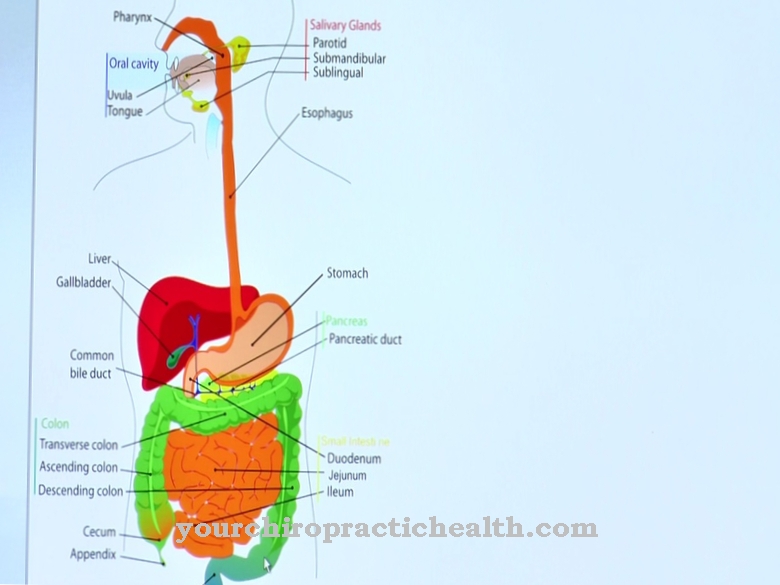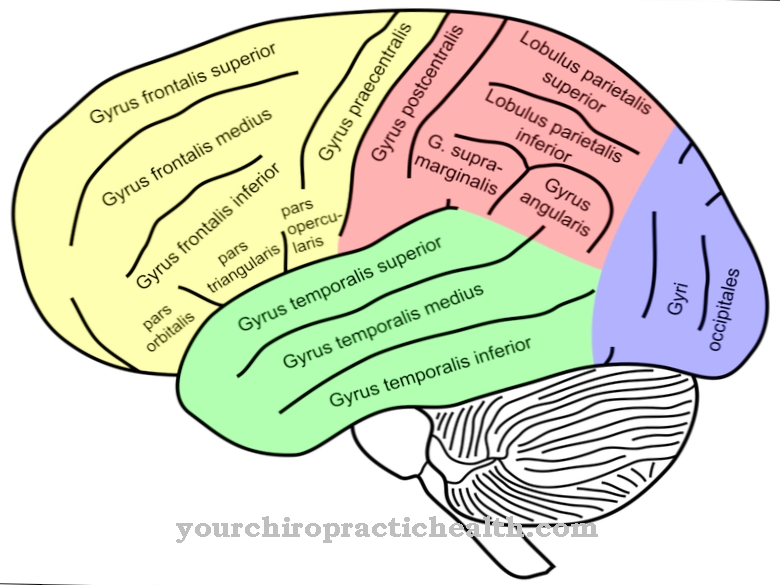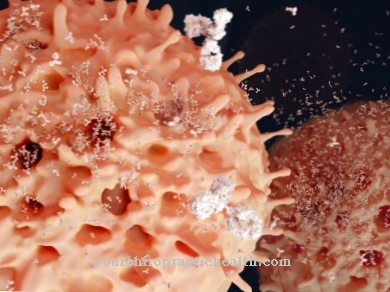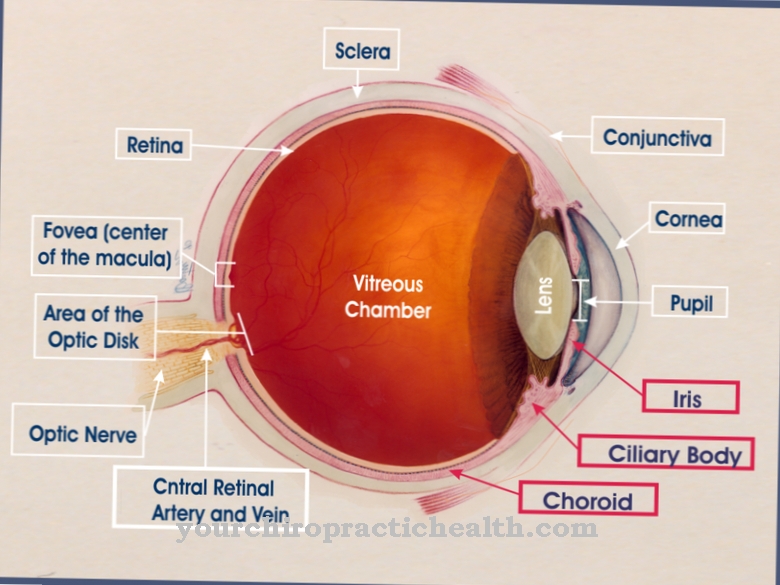Of the Nervus petrosus profundus is a sympathetic nerve of the head region. Its main tasks include the inhibitory influences on saliva and tear production. Injuries and failures of the deep petrosal nerve can result in salivary and tear secretion disorders, among other symptoms.
What is the deep petrosal nerve?
The internal carotid plexus corresponds to the periarterial sympathetic nerve fiber network of the internal carotid artery. The internal carotic nerves of the upper cervical ganglion (ganglion cervicale superius) are involved in the plexus and form different structures after exiting the nerve plexus.
These structures are the postganglionic fibers of the internal carotid plexus. One of these fibers is the deep petrosal nerve. Together with other structures, this nerve passes through the ciliary ganglion and the pterygopalatine ganglion and controls its target organs from there. The nervus petrosus profundus thus corresponds to a sympathetic nerve in the head region.
The sympathetic nervous system is part of the autonomic nervous system and evades arbitrary control. Therefore the fibers of the deep petrosal nerve cannot be arbitrarily influenced. With its sympathetic fibers, the nerve innervates various tissues, such as the lacrimal glands, for example, the blood vessels in the head region. In the German specialist literature, the nerve is also called deeper Petrous nerve designated.
Anatomy & structure
The deep petrosal nerve arises from the internal carotid plexus. From this plexus of nerves near the internal carotid artery (internal carotid artery), the nervous structure moves together with the vessel into the so-called petrous bone (pars petrosa ossis temporalis), where it joins the parasympathetic petrosus major nerve to form the pterygoid nerve or Vidi nerve .
As the nervus canalis pterygoidei, the nervus petrosus profundus runs through the alar process canal and controls the ganglion pterygopalatineum. The ganglion is a collection of nerve cell bodies through which all fibers of the deep petrosal nerve run without interconnection. The nervus petrosus profundus is switched only in the truncal ganglion cervicale superius. In this upper cervical ganglion between the longus capitis muscle and the digastricus muscle, different sympathetic nerves are connected, which innervate the head area and the neck area close to the head.
The sympathetic root cells reach the superior cervical ganglion via the vagosympathetic trunk or the neck part of the trunk. At this point, the deep petrosal nerve contributes sympathetic fibers to the major petrosal nerve of the seventh cranial nerve (facial nerve) and also provides fibers for the eye and ear via the ciliary ganglion. In the eye socket, the fibers of the deep petrosal nerve attach to the zygomatic nerve of the maxillary nerve and move on to the lacrimal gland.
Function & tasks
The nervus petrosus profundus releases sympathetic fibers to the lacrimal gland and blood vessels of the head region. In addition, the structure innervates the glandulae nasales and glandulae palatinae. Since the deep petrosal nerve is also involved in the innervation of the orbital muscle, it controls the venous return of blood into the inferior opthalmic vein. It is also involved in facial innervation as a fiber component of the gacial nerve and also mediates sympathetic influences on the eyes and ears. The sympathetic nerve has an inhibitory effect on the innervated glands in particular.
The glandulae palatinae are numerous salivary glands within the submucosal tissue of the posterior hard palate, the soft palate, and the uvula. Unlike the parasympathetic nervous system, the sympathetic nervous system prepares the body for maximum performance and inhibits all bodily functions that can be dispensed with in the current situation. The sympathetic nervous system is the more active part of the autonomic nervous system in stress reactions and is intended to ensure the survival of the organism by increasing the body's performance and initiating concentration on essential body processes.
Since the sympathetic nervous system inhibits all unnecessary bodily functions in stress reactions, the sympathetic fibers of the deep petrosal nerve have an inhibitory effect on the salivary glands. On the other hand, the sympathetic nervous system increases the tone of the veins. The fibers of the nervus petrosus profundus therefore stimulate the venous muscle Musculus orbitalis to contract. These processes affect the entire cardiovascular system.
You can find your medication here
➔ Medicines for eye infectionsDiseases
Like any other nerve, the deep petrosal nerve can be affected by inflammatory, mechanical, or compression-related damage. Depending on the extent of the damage, various functional failures and symptoms of paralysis occur within the supply area.
Since the nerve is a sympathetic nerve, the interplay between the parasympathetic and sympathetic nerves shifts when the structure is damaged. This means that the tissues and organs in the supply area of the deep petrosal nerve come under predominantly parasympathetic influence. In addition to trauma and inflammation, the cause of failure symptoms of the deep petrosal nerve can be, for example, masses that cause crushing of the nerve. Some pathological conditions of the deep petrosal nerve can be determined using the Schirmer test.
Ophthalmology uses this test to diagnose tear secretion disorders. During the test, a strip of litmus paper is hung in the lower conjunctival sac of both eyes. The onset of tear secretion moisturizes the paper. After minutes, the doctor measures the distance on the strip that is wetted by tear fluid. Ten to 20 millimeters of the paper is usually moistened after five minutes. If the moistened stretch is far above or below this value, this indicates a tear secretion disorder, which can indicate pathological changes in the sympathetic-parasympathetic interplay.
However, tear secretion disorders can also be triggered by a number of processes without a neurogenic nature. Imaging helps with differential diagnosis. If the deep petrosal nerve has actually failed, additional symptoms such as salivary secretion disorders or facial disorders usually occur.
























.jpg)



